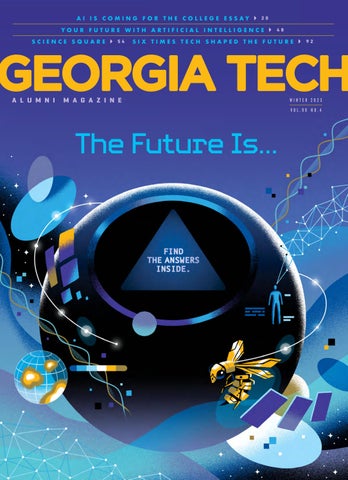
Unraveling the Physics Underpinning AI: New Research Illuminates ChatGPT’s Bizarre Behavior
In a notable advancement that bridges the gap between physics and artificial intelligence, a team at George Washington University has unveiled a pioneering theoretical framework that clarifies some of the most perplexing behaviors observed in large language models (LLMs) such as OpenAI’s ChatGPT. Spearheaded by physicist Neil Johnson and his research associate Frank Yingjie Huo, the study provides a foundational mathematical comprehension of why AI systems occasionally generate repetitive text, fabricate information, or unpredictably produce harmful content.
These unusual phenomena—once dismissed as mere quirks or anomalies in training—might now have a more profound scientific rationale rooted in the physical principles of interacting systems. The findings of the research team are elaborated in their new preprint study, “Capturing AI’s Attention: Physics of Repetition, Hallucination, Bias and Beyond.”
Exploring the Physics of Attention
At the heart of contemporary language models is a mechanism referred to as Attention, which enables AI systems to discern which segments of input data (such as words within a sentence) are most pertinent for producing output. While essential for the efficiency of LLMs, the intricate operations of the Attention mechanism have frequently been characterized as a “black box” because of their complexity and obscurity.
The George Washington team breaks through this haze by modeling the Attention process using physics, likening it to two spinning tops—or more precisely, a 2-body Hamiltonian system. In physics, Hamiltonians explain the flow of energy within a system, whether it pertains to rotating particles, physical forces, or, now, how AI forecasts subsequent words.
This comparison enables the researchers to relate the behavior of AI models to established physical systems, revealing that repetition, hallucination (fabricated content), and bias are not merely byproducts of inadequate data or insufficient training—but are fundamentally intertwined with how language models calculate probabilities for the words they are poised to produce.
What Makes AI Models Repeat or Mislead?
Users have encountered instances where ChatGPT engages in circular dialogues, echoes phrases, or presents confidently incorrect information. Previously, these behaviors were believed to arise from either insufficient training data or adversarial inputs.
Nonetheless, the physics-based model proposed by Johnson and Huo presents an alternative explanation. Their findings indicate that AI models bear resemblance to statistical particle ensembles within physics. When generating each new word, the system “interacts” with an internal vocabulary in a way analogous to particle dynamics. This suggests that even a minor hidden bias or an improbable sequence within the vocabulary can temporarily overshadow the model’s prediction mechanism.
This occurrence, which the authors compare to a rogue energy state dominating a physical system, can lead the AI to abruptly repeat itself or produce unexpected (and sometimes dangerous) content—without any external stimulus.
Not Merely a Training Issue
The uniqueness of this study lies in its transition from treating surface-level symptoms—such as filtering content or refining training datasets—to pinpointing the fundamental causes embedded in the mathematical framework of the AI itself.
By doing this, the researchers contest the common belief that most AI errors originate from poor training examples. Instead, they illustrate how these challenges are ingrained within the architectural and probabilistic underpinnings of the models, demonstrating that even impeccable training data cannot wholly safeguard against problematic outputs.
Significant Potential for Safer AI
This research has widespread implications. For both policymakers and developers, this theoretical revelation offers a new pathway for crafting more predictable and manageable AI systems. The physics model empowers developers to foresee and mitigate undesirable behaviors through structural modifications instead of relying on continuous retraining or post-processing.
Dr. Elizabeth Morgan, an AI ethics specialist not involved in the research, highlights the importance of the paper: “Grasping the physics of AI Attention could provide us with fresh tools to avert harmful outputs without sacrificing performance. This represents foundational science, and it has arrived at a crucial juncture.”
Towards a More Comprehensive Model of AI
An additional intriguing perspective from the study suggests that the fundamental two-body interaction model utilized by current systems may be restrictive. By incorporating three-body interactions—similar to more sophisticated particle systems in physics—the researchers hypothesize that forthcoming AI models could more effectively encapsulate the complexities of language, reducing errant behavior.
Such advancements would bring AI closer to the chaotic but expressive dynamics of human language, potentially paving the way for a new generation of more resilient and nuanced language models.
A Step Towards Transparent Artificial Intelligence
The study’s philosophical methodology, rooted in first principles, represents a significant shift away from conventional machine learning investigations, which usually depend on monitoring patterns and empirically adjusting networks post-construction. By establishing a defined mathematical model to articulate Attention’s role in language generation, researchers now possess a standardized framework to comprehend what is genuinely occurring within systems like ChatGPT.
“This is a unique moment where experts in physics can directly contribute to making AI more reliable and robust,” the authors express. “This transcends mere technical improvement. It offers a new scientific perspective on intelligence itself.”
Looking Forward